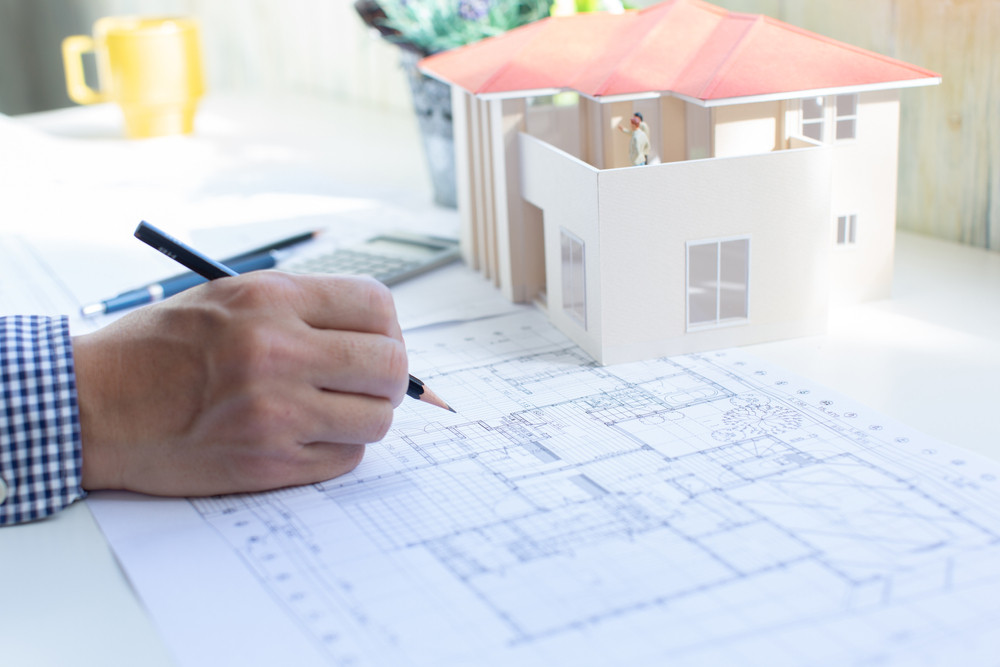Discover Innovative Layouts with Leading CDA Architects for Your Following Job
Discover Innovative Layouts with Leading CDA Architects for Your Following Job
Blog Article
A Comprehensive Introduction of Architectural Designs and Their Influence on Modern City Preparation and Growth
Building designs have long served as a mirror to the social values and technological advancements of their time, playing an important function in shaping modern-day city planning and growth. From the splendour of Neoclassicism to the utilitarian approach of Brutalism, each design has actually presented distinct concepts that affect city appearances and functionality.
Historical Summary of Building Styles

As cultures transitioned through the Center Ages, Gothic style emerged, characterized by its verticality and detailed detailing, matching the spiritual goals of the age. The Renaissance marked a rebirth of timeless suitables, merging art and architecture in innovative methods that influenced succeeding designs throughout Europe.
:max_bytes(150000):strip_icc()/Buildingdesigns-GettyImages-912482942-db55b3af711044a3a42ad1040c6711a9.jpg)
Today, architectural designs remain to develop, driven by globalization and sustainability problems, showing a vibrant interplay between heritage and innovation. This historical introduction underscores the value of design as a mirror of social advancement and as a catalyst for city development.
Key Architectural Styles Explained
The variety of building designs shows the myriad impacts that form our developed setting, each symbolizing distinctive attributes and cultural significances. Trick building styles consist of Timeless, Gothic, Baroque, Innovation, and Postmodernism, each representing special historical contexts and visual philosophies.
Classical design, rooted in ancient Greece and Rome, stresses symmetry, percentage, and the usage of columns (cda architects). In comparison, Gothic design, flourishing in the center Ages, is identified by pointed arcs, ribbed vaults, and flying buttresses, creating a spiritual high quality in cathedrals. Baroque design, emerging in the 17th century, is marked by majesty, sophisticated embellishment, and a dynamic interplay of light and darkness
Modernism, which obtained energy in the early 20th century, focuses on feature over kind, using new products like steel and glass to create minimal structures. Postmodernism, reacting versus the austerity of Modernism, accepts eclecticism and historic referral, frequently integrating playful aspects and irony.

Influence On Urban Preparation
In shaping the growth of cities, building styles considerably influence metropolitan preparation decisions. The option of architectural design often determines the aesthetic appeals, performance, and find this total personality of city environments. For example, innovation, with its emphasis on minimalism and functionality, urges open spaces and the integration of technology, shaping city designs that prioritize performance and ease of access. Alternatively, traditional styles might highlight historic preservation, causing urban layouts that preserve social heritage and advertise pedestrian-friendly atmospheres.
Additionally, building designs can impact zoning regulations and land utilize policies. Urban organizers should consider the dominating building trends when designing areas, guaranteeing that brand-new advancements harmonize with existing frameworks. This consideration cultivates natural city landscapes and enhances neighborhood identity.
The execution of specific building designs can likewise affect socioeconomic aspects within a city. Premium modern layouts may attract upscale citizens and businesses, leading to gentrification, while extra affordable housing solutions might prioritize functional and sustainable layouts to accommodate varied populaces. cda architects. Ultimately, the interaction in between building styles and city preparation develops vibrant cities that show both historic context and contemporary needs, shaping the lived experiences of their citizens
Sustainability and Modern Architecture
Building styles play a crucial role in resolving modern challenges, particularly in the world of sustainability. As metropolitan locations expand and environmental worries escalate, contemporary style progressively accepts lasting layout concepts that focus on energy performance, source preservation, and very little eco-friendly impact.
Contemporary architectural activities, such as biophilic design and environment-friendly style, advocate for frameworks that harmonize with their surroundings, utilizing natural products and advertising biodiversity. These designs often integrate renewable resource resources, such as photovoltaic panels Read Full Report and wind generators, to reduce dependence on nonrenewable fuel sources and reduced carbon impacts.
Furthermore, the combination of innovative modern technologies, such as wise structure systems, improves energy management, enhancing resource usage while making certain owner comfort. Ingenious water management methods, including rain harvesting and greywater recycling, more add to sustainable metropolitan atmospheres.
Notably, sustainability expands beyond ecological concerns; it encompasses social and economic measurements. By cultivating neighborhood health and advertising inclusivity, contemporary architectural styles align with sustainable development goals. The advancement of building techniques proceeds to form resilient cities that not only satisfy the needs of the present yet also safeguard the future for generations to come.
Neighborhood Interaction in Style
Area involvement in layout functions as a critical bridge between architects and the populations they offer, making certain that the developed atmosphere reflects the demands and desires of its individuals. This collective process invites community members to contribute their understandings and preferences, fostering a feeling of possession and duty towards the rooms they populate.
Reliable neighborhood engagement uses different techniques, such as workshops, studies, and public forums, to collect varied viewpoints. These strategies promote a two-way dialogue, enabling architects to recognize neighborhood contexts while empowering locals to voice their worries and desires. This inclusivity not only improves the layout quality however additionally promotes social equity by addressing the one-of-a-kind difficulties encountered by marginalized teams.
In addition, neighborhood engagement can bring about innovative solutions that may not emerge in a standard style procedure. By incorporating local expertise and social values, architects can produce rooms that reverberate more deeply with individuals, boosting usability and sustainability. Inevitably, prioritizing neighborhood engagement in style processes leads to environments that nurture social interactions, support health, and strengthen community connections, thereby playing a pivotal duty in forming contemporary metropolitan landscapes.
Final Thought
Building styles have greatly affected modern city planning and advancement, mirroring evolving cultural and technical contexts. The combination of historic appearances with modern demands promotes metropolitan settings that focus on sustainability and community involvement. As cities proceed to grow and adapt, the recurring dialogue in between anonymous building heritage and contemporary layout principles will certainly remain important in creating comprehensive, vibrant spaces that improve lifestyle and promote social equity. The future of metropolitan growth depend upon this unified equilibrium.
Report this page